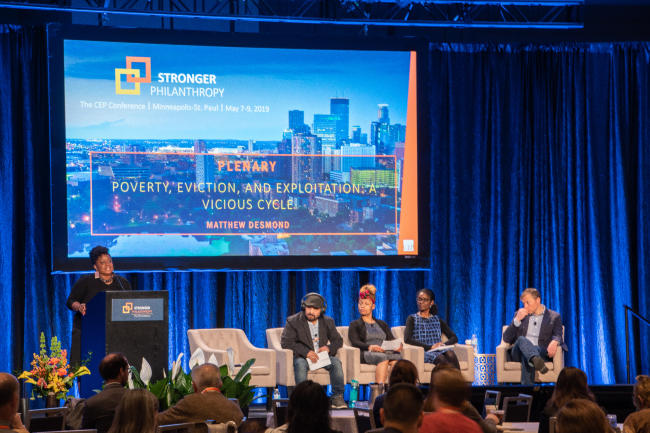CEP 1-2-3: Takeaways from the Center for Effective Philanthropy Conference, 2019

Several members of the Arabella Advisors team attended last week’s Center for Effective Philanthropy (CEP) 2019 national conference, Stronger Philanthropy. The three-day gathering featured dozens of expert speakers and practitioners sharing ideas on how to improve philanthropic efforts spanning a range of issues.
As our colleagues returned, we had a chance to catch up with them about what they saw and heard. Here are three insights they shared for funders looking to strengthen their own philanthropy.
1. Stop, Collaborate, and Listen
The desire to find better ways to work together has been a theme in philanthropic circles for some time now—and it’s a good thing, too. Different types of funders bring different strengths to collaborative efforts: some bring size, some agility, some deep experience, and others youthful exuberance. By working together effectively they can often accomplish more than they could hope to achieve alone.
As one of our attendees noted, “funding partnerships can span a variety of otherwise challenging gaps–including those between the political left, right, and center–and can advance change in a wide variety of areas, including veterans’ affairs, workforce development, the opioid epidemic, and civic education.”
Of course, collaboration often isn’t easy. As another of our attendees noted, “To build partnerships with those who are new to the field or simply different in the size or scope of their engagement, collaborative funders need to learn to listen, be willing to compromise, establish operating principles together, and align on values.”
2. Then Listen Some More
The ability to listen and learn is critical to collaboration among donors and a whole lot more besides. In fact, it’s among the most important skills grant makers can build.
Summing up a theme she traced through several CEP sessions, one of our attendees noted that those who wish to accomplish sustainable change “must adopt a listening posture when engaging with the people and communities they aim to support.” This is true in urban, rural, local, and international contexts alike.
Sustainable progress requires taking the time to build real alignment and trust
3. Only Connect—through Intermediaries
Once viewed mainly as “middlemen,” funding intermediaries increasingly play a critical role in knitting together philanthropic ecosystems. They bring different players together (enabling collaboration), set the tables for discussions (encouraging listening and learning), aggregate capital (diffusing risk and reducing expense), and enable work on system-level changes.
Simply put: intermediaries are crucial to some of the most innovative work going on in philanthropy today, at both the international systems scale, through efforts like Co-Impact, and the local systems scale, through efforts like the Heartland Fund. They increasingly function as bridges, backbones, and ecosystem builders, empowering work that otherwise couldn’t or wouldn’t happen.
For more takeaways and materials from the conference, see the CEP blog: https://cep.org/blog/
